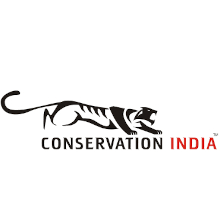[Image from Unsplash]
Climate Change has now become a household name and rightfully so, as it needs the attention that it deserves. However, the irony is, this seemingly ubiquitous name is viewed by the common person as a ‘phenomenon’ that is far-removed from us as individuals. That somehow it is a problem out there for the scientists of the earth to figure out and find solutions, just like how we found a way out of the Ozone Hole catastrophe.
Unfortunately, the reality is starkly different. It is our — humans’ — indiscriminate use, and destruction of earth’s resources for our own “development” that has brought us to this tipping point. Climate Change should ideally be constantly referred to as Human-caused Climate Change. This would probably drive home the point that we — each one of us — caused it, so we better take ownership of its effects and find solutions to reverse it.
Further, as Indians, it is not a proud fact to know that our country is the third largest contributor of earth’s greenhouse gases. It is pointless to take solace in the fact that China and the US are way ahead of us as contributors. Moreover, whataboutery will not get us anywhere close to solutions.
India’s agricultural dependence and water scarcity are enough crucial reasons why Climate Action is the need of the hour. Notwithstanding, climate impacts such as extreme weather events (floods, droughts, heatwaves, changing monsoon patterns, etc.); public health risks (vector-borne diseases, heat-related illnesses, sanitation-related diseases, waterborne diseases, malnutrition, etc.); economic implications (disruptions in agriculture, infrastructure damages, increased healthcare costs, etc.) would eventually hinder our “development”.
The first step towards concrete action would be to understand and accept how each one of us — individuals, organisations, corporations, and governments — contribute actively to it. Only then can we all support to work together and create a large-scale positive effect, in addition to pushing our governments to prioritise Climate Action in their agenda.
This apart, India has globally committed to take actions by being a signatory to various international agreements, which aim at limiting and reducing greenhouse gas emissions. As a country making headlines across the globe for its economic development, it is time we are also seen as a leader of Climate Action to become a model country for others to learn from, where development can take place but not at the cost of Mother Earth.
There are innumerable solutions to combat Climate Change by various scientists and agencies. Here, we have attempted to group them into seven key categories for easier understanding.
1. Renewable Energy: Our country’s dependency on coal for energy needs is a huge contributor to greenhouse gas emissions. Renewable energy would include transitioning from fossil fuels to renewable sources such as solar, wind, hydro, and geothermal energy — essentially clean energy technologies.
2. Biodiversity Conservation and Restoration: Protecting existing wild habitats (including forests, marine and mangroves) and restoring degraded lands through scientific and correct restoration/ rewilding efforts can help absorb a huge amount of carbon dioxide from the atmosphere — a cost-effective, natural climate solution. Data is increasingly helping us understand that ecosystem protection and restoration represent 30% of the opportunity to address Climate Change.
3. Sustainable Transportation: This involves promoting low-carbon transportation options such as public transportation, biking, and walking. This would mean improving infrastructure to support sustainable transportation systems.
4. Sustainable Agriculture: Practices that reduce greenhouse gas emissions from agriculture, such as promoting organic farming, agroforestry, and precision farming techniques. It also involves reducing food waste and adopting sustainable land management practices.
5. Energy Efficiency: Improving energy efficiency in various sectors like buildings, transportation, and especially manufacturing industries by adopting energy-efficient technologies and reducing energy-waste.
6. Circular Economy: This approach focuses on reducing waste and maximising resource efficiency. It involves recycling, reusing, and repurposing materials to minimise the extraction of new resources and reduce emissions associated with production and disposal. At an individual level it would be to follow the adage, Reduce, Reuse and Recycle.
7. Climate Adaptation: While Adaptation is seen as a collection of quick fix solutions that do not address the root cause of Climate Change, several vulnerable communities need these right now as their daily lives are being affected. This category involves preparing for and adapting to the impacts of climate change, such as building resilient infrastructure, implementing early warning systems, and developing strategies to protect vulnerable communities.
Here are a few links to articles and videos which will help us with the various perspectives on Climate Change
The science
1. Watch a video: "Climate Change Explained" by National Geographic. This animated video breaks down the basics of Climate Change, including the greenhouse effect, global warming, and the role of human activities.
2. Watch a video: “13 Misconceptions about Global Warming” by Veritasium, a science communication channel. Here Derek Muller explains the typical misunderstanding that surrounds global warming and climate change.
3. Browse: “The ultimate Climate Change FAQ” by The Guardian. Browse all topics related to Climate Change — the big picture, the science, the politics and its impact.
4. Browse: Climate Change 101 by NASA. This page provides a comprehensive overview of Climate Change, its causes, impacts, and potential solutions.
5. Read an article: "Climate Change: How to Understand the Basics" by National Geographic. This article breaks down the key concepts related to Climate Change, such as the difference between weather and climate, the role of carbon dioxide, and the importance of reducing emissions.
And what can we do about Climate Change
6. Read an article: Here are ten ways in which each of us can help tackle Climate Change. "10 Solutions for Climate Change'' by David Suzuki Foundation.
7. Watch a video: Biodiversity is the key to life on Earth and reviving our damaged planet. This TED talk by ecologist Thomas Crowther shows how protecting wild habitats and restoring degraded ones are crucial approaches to Climate Action.


